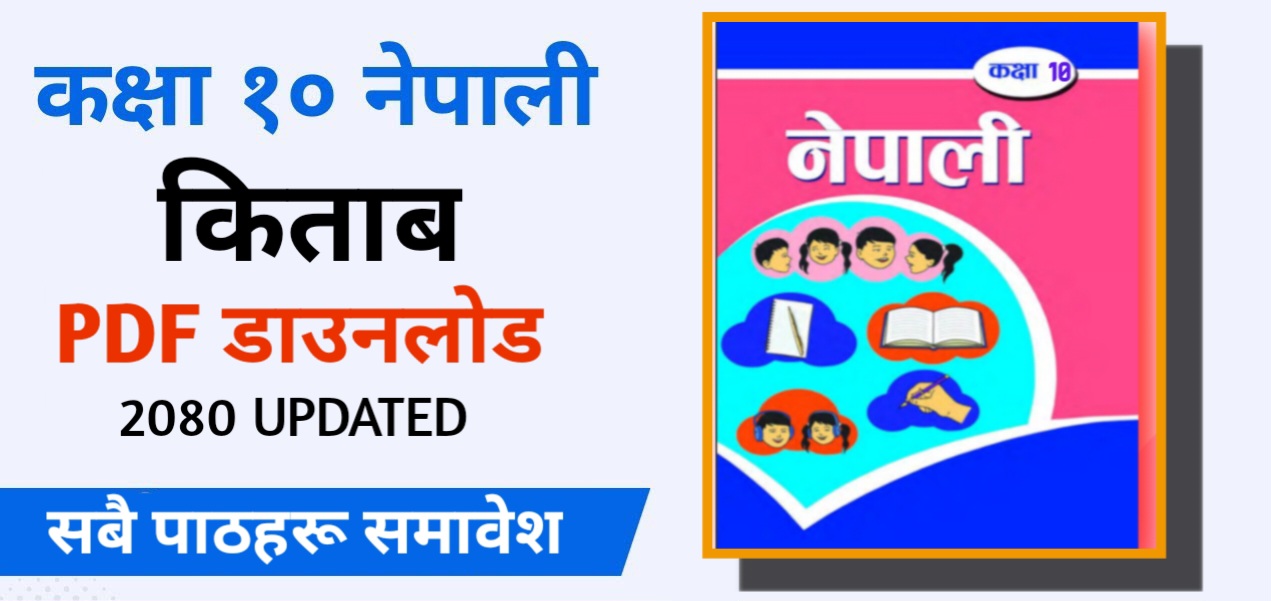Computer Security: Class 10 Computer Exercise
Chapter - 4
Computer Security
📚EXERCISES
1. Answer the following questions:
a. What is meant by Computer Security?
Ans: The protection of computer data, information, program and hardware from malicious attackers is known Computer security.
b. What is computer Security threat? List its types.
- Physical threat
- Non physical threat
c. What is malicious code? List any two example of it?
- Computer viruses
- Worms
d. What is computer viruses ? List any two destruction tasks of it.
- It display unnecessary messages and images
- It runs unwanted programs
e. What the routes of computer viruses
transmission ?
- Using pirated software
- By sharing of infected portable storage device
- By downloading files from unreliable web sites
- By exchange of data on the network
- By Opening virus infected email
f. List any four symptoms of computer viruses.
- Changes in size of files
- Missing of files or folders
- Appearing of unusual error messages
- Programs hangs frfrequently
g. Write four preventive ways to protect computer system from computer viruses.
- Stop using Pirated software
- Install antivirus software
- Scan the Computer for viruses regularly
- Install the latest security patch program
h. Define computer worm and trojan horse ?
Ans: Computer Worms are malicious code that do not hide in any file and spread from one computer to another while exchanging files through email, the internet and portable storage disk.
The Trojan horse is destructive program that pretend to be useful program but performs malicious actions.
i. What is information security ? What does it do?
Ans: Information Security is the protection of data, information and software from being lost or damaged due to accidental or intentional harm.
It controls or prevent the unauthorized
accessing of data and information.
j. List any four data and software security measures.
- firewall
- Antivirus Software
- Authentication system : Password and Biometric
- Backing up data and software
k. What is a password? Why do we need to apply password for a file?
Ans: A password is a secret word or a sequence of characters that provides accessibility to a user to access a file or computer system.
We need to apply password for a bile in order to protect them from unauthorized users.
l. What is cryptography? Explain with a diagram.
m. What is firewall ? List any four purpose of using firewall.
- To block unwanted network traffic
- To protect private network from unwanted access
- To block the unsuitable content of the site.
- To prevent entering of virus, Warms etc.
n. What is antivirus ? List any for antiviruses.
- Kaspersky Antivirus
- Avira Antivirus
- Avast Antivirus
- AVG Antivirus
o. What is a backup? Mention the importance of backup system.
- It helps to protect data and information of a computer
- It helps to recover files it operating system is crashed
- It helps to protect data ga against power failure.
p. What is hardware security ? List four hardware security measures.
- Regular maintenance
- Insurance
- Protection from kire and thieves
- Air Condition system
q. How does regular maintenance help to protect computer hardware?
Ans: Regular maintenance helps to find out problems in hardware and correct the problem before it cause several damages. It helps to keep the computer hardware in good working condition.
r. What is power protection device? List
any four protection devices.
- Volt guard
- Spike guard
- Stabiliser
- Constant Voltage Transformer
s. What is the role of Ups in the computer Security?
Ans: The role of ups in the computer security is to protect computer hardware, files and Operating system from the fluctuation of electric voltage and frequent
Power failure.
2. Write the appropriate technical terms for the following:
a. Securing computer data, information, and programs and hardware from malicious attackers and accidental harm.
- Computer security
b. Anything that has potential to cause harm to data, information, software and hardware.
- Security threat
c. Any harmful computer code or website script that is intended to cause undesired effects, security breachedes or damage to a computer system.
- Malicious code
d. A destructive Program that hides in host flies and replicates itself.
- Computer Virus
e. A destructive program that does not hide but can replicate itself.
- Computer Worms
f. A destructive program that does not replicate itself.
- Trojan Horse
g. The process of identifying whether a person is authorised or unauthorized to access computer system.
- Authentication
h. A secret word that provides accessibility to a user to use a file, application or computer system.
- Password
i. A device that reads information on finger prints, facial patterns, voice or eye of a person.
- Biometric
j. Making data or information unreadable by unauthorised person.
- Cryptography
k. Converting unreadable text (i.e clipper text) back to its original form.
- Decryption
l. Security barrier that protects computer system from only external computer security threats.
- Hardware firewall
m. A security measures that protects computer system from internal and external security threats.
- Firewall
n. Making an extra copy of data and software.
- Backup
o. A device that protects computer system from fluctuation of electric Voltage.
- Power Protection device
p. A device that provides back up electric power to the computer.
- UPS
3. State whether the following statements are true or false.
a. The data and programs stored in a disk cannot be damaged.
✔ False
b. Malicious code includes computer viruses, worms, Trojan horses, malicious website scripts and other malicious active contents.
✔ True
c. A malicious website is a site that attempts to install malware onto a usercomputer
✔ True
d. The password prevents unauthorized users to access a file, application or computer system.
✔ True
e. A biometric door locker prevents the authorized person to enter inside a room
✔ False
f. The process of converting non-readable format data into readable format known as encryption.
✔ False
g. A hardware firewall can block the harmful data that comes in from the Internet.
✔ True
h. Antiviruses are the harmful programs that spread computer viruses.
✔ False
i. The regular maintenance helps to detect problems in computer hardware.
✔ True
j. The dust particles can damage hard disk of a computer.
✔ True
k. A volt guard supplies back up electric power to the electronic goods when there is load shedding.
✔ True
4. Write the full forms of the followings.
a. FAT = File Allocation Table
b. MALWARE = Malicious software
c. DDOS = Disturbed Denial Of Service .
d. SMPS = switched Mode Power Supply.
e. CVT = Constant voltage Transformer
f. UPS = Uninterruptible Power Supply
g. PSU = Power supply Unit.
h CCTV = Closed circuit Television
5. Choose the correct options.
a. Data, information and programs of a computer may get corrupted or damaged
due to .......
i. Malware
ii. Power failure
iii. Hacker
iv. All of the above ✔
b. A physical threat to computer security includes......
i. Faulty wiring
ii. Power failure
iii. Stealing a computer ✔
iv. All of the above
c. ........ is not the malicious code.
i. Virus
ii. Trojan horse
iii. Kaspersky ✔
iv. Worm
d. Computer virus is ........ software.
i. Malware ✔
ii. Utility
iii. Application
iv. Operating System
e. Computer viruses can....
i. Hide in a host file
ii. Replicate
iii. Spread
iv. All of the above ✔
f. Computer viruses can spread from one computer to another through.
i. Infected portable disk
ii. The Internet
iii. Pirated Software
iv. All of the above ✔
g. Information security measure is/are ......
i. Firewall ✔
ii. Protection from theft
iii. Pirated Software
iv. All of the above
h. Which is antivirus software?
i. Scan
ii. Defrag
iii. Kaspersky ✔
iv. Power point
i. ..... supplies back up electric power to the computer system when there is electric power failure.
i. CVT
ii. Spike guard
iii. Volt guard
iv. UPS ✔
j. A malware that monitors online activities of a user on a computer and the Internet is..
i. Ransomware
ii. Spyware ✔
iii. Spam
iv. All of the above
k. .......... is the technique used by cyber criminals to steal sensitive credentials of online users.
i. Phishing ✔
ii. Ransomware
iii. Adware
iv. Spyware
6. Match the following:
a. Spam → iii. unwanted message sent for advertisement purpose
b. Browser Hijack→ iv. shows unwanted advertisements on a web browser.
c. Scareware→ i shows fake virus alert
d. Worm→ ii. makes the network slow
- Computer Security
- Internet & its Services
- Ethical & social issues in ICT
- Networking & Telecommunication
If Class 10 Computer Security Notes were helpful to you then don't forget to share this notes with your friends & classmates.








